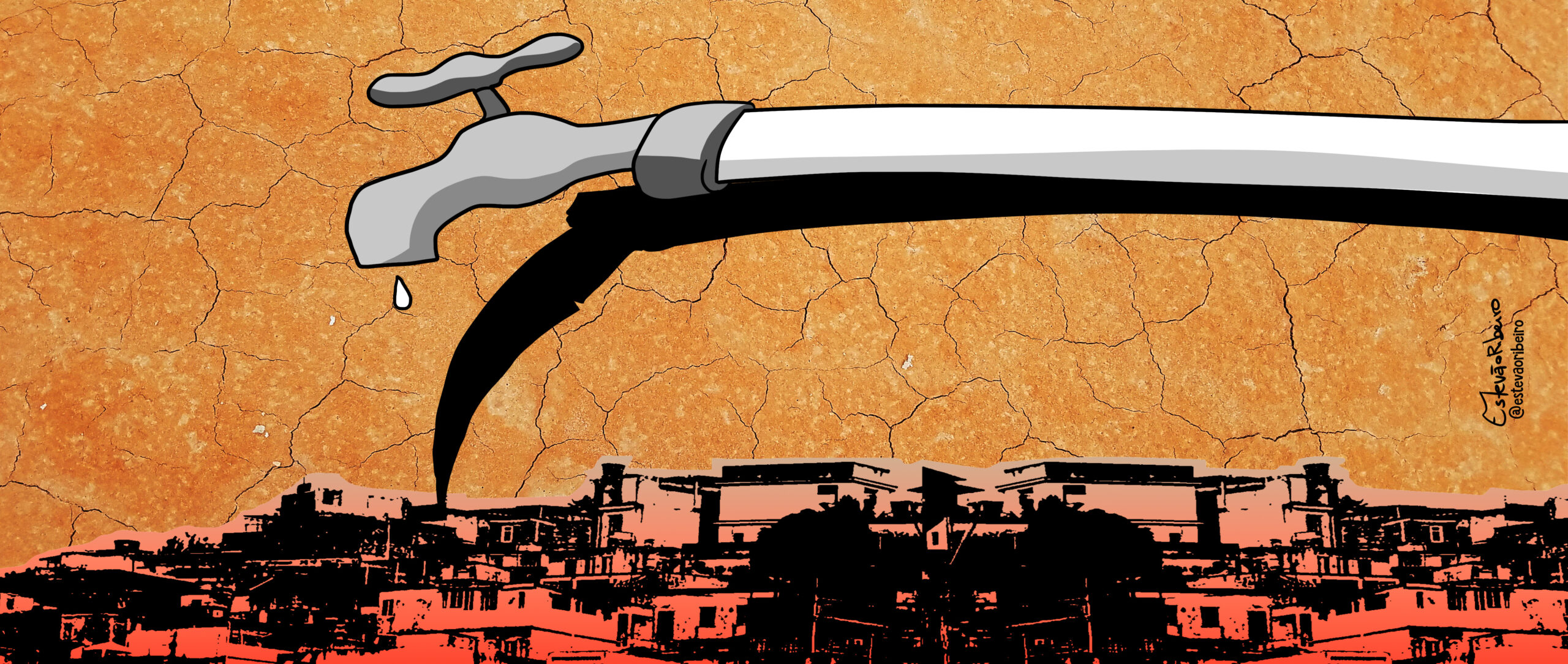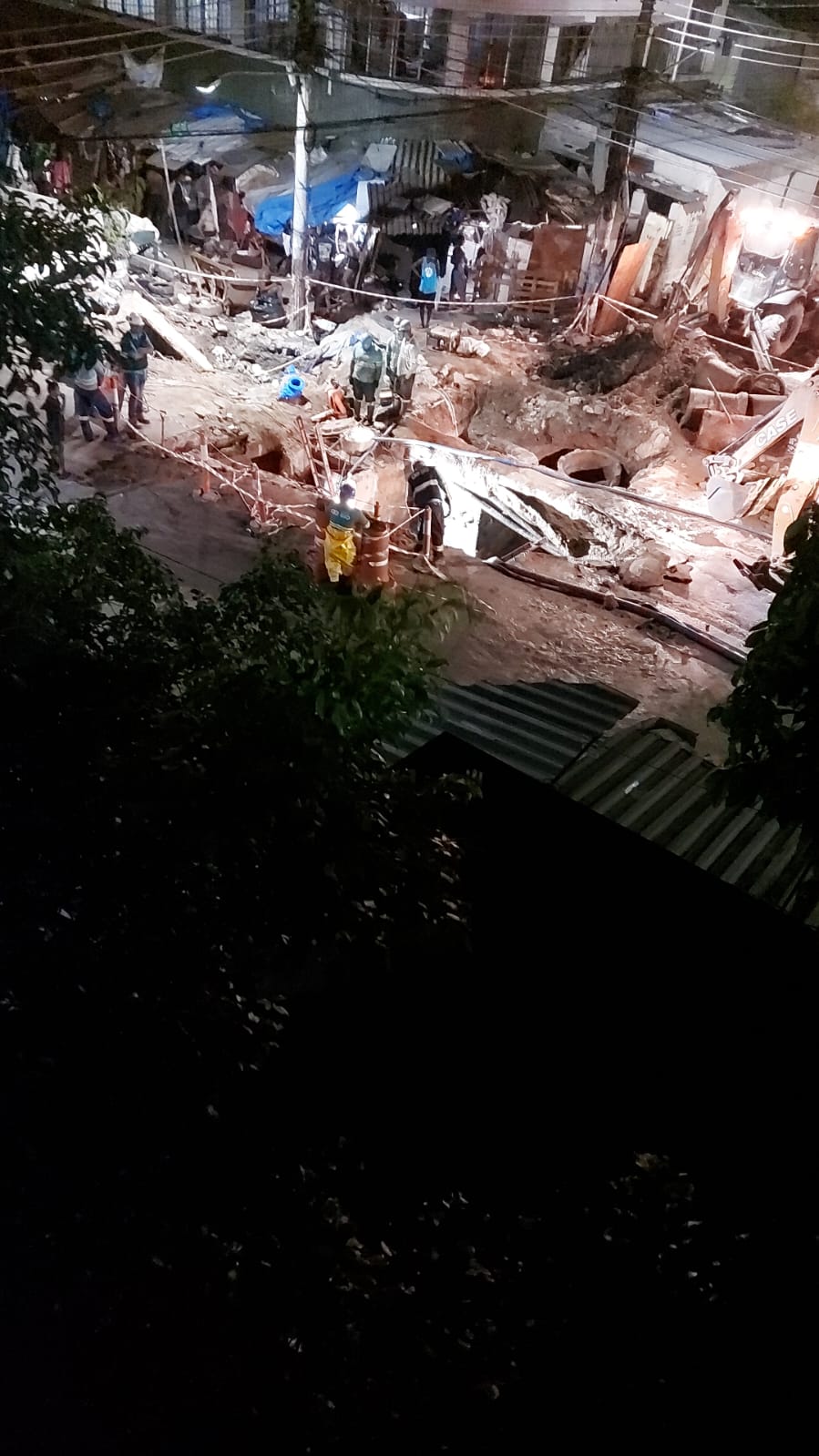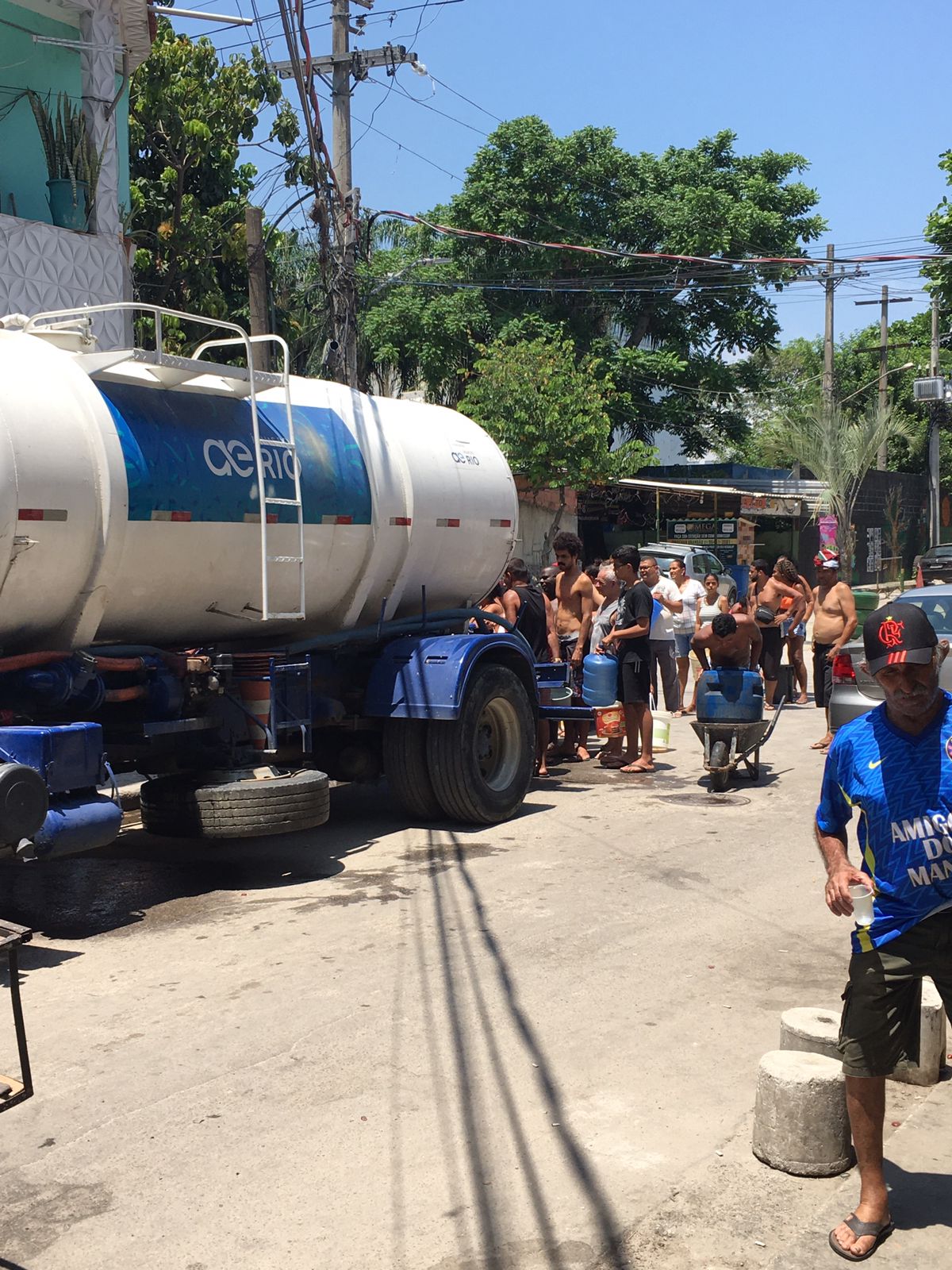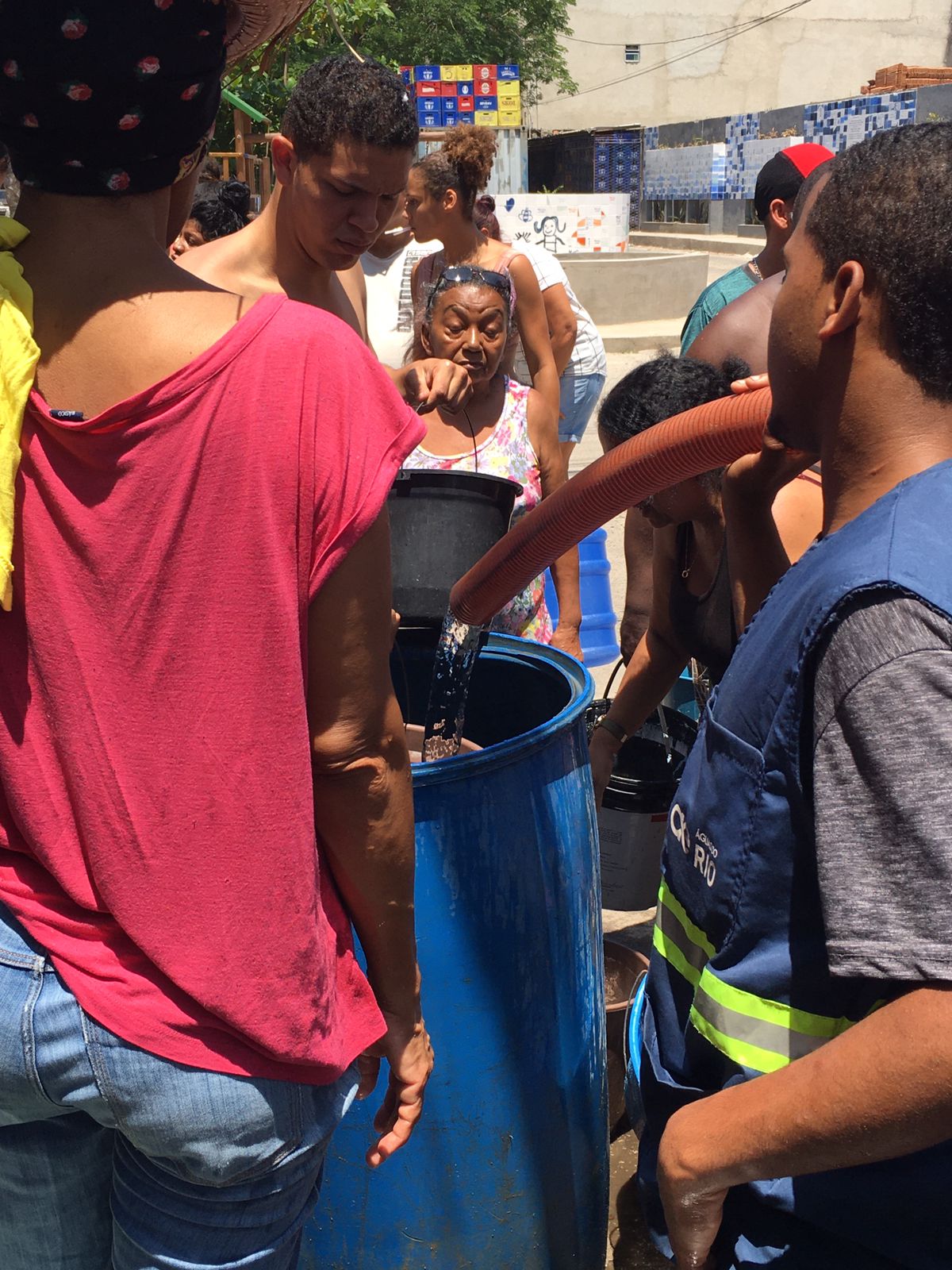

This is our latest article in a series created in partnership with the Behner Stiefel Center for Brazilian Studies at San Diego State University, to produce articles for the Digital Brazil Project on water issues and the LGBTQIAP+ population in Rio’s favelas and in the Baixada Fluminense for RioOnWatch.
As the summer begins in Rio de Janeiro, with temperatures already high, residents in Maré are suffering with water supply cuts in various parts of the favela. The Parque União, Rubens Vaz, Parque Maré and Nova Holanda areas have been experiencing issues for at least two weeks, while reports of water shortages have emerged in Baixa do Sapateiro and Morro do Timbau in the last few days. According to the private water utility Águas do Rio, the supply varies due to a defect with the region’s sub-main.
Water shortages have affected tens of thousands of residents for an average of 14 days. In other Maré residences, the water running from taps has a dark color and odour of sewage, making it unsuitable for consumption.
Ver essa foto no Instagram
It’s really hot, isn’t it?
Now imagine not having water for over two weeks? That’s what Maré residents have been facing
The burning question is: where’s our water @aguasdorio? Tag the company here in the comments and share it with everyone. That way you can help us get our service back as fast as possible.
#WHERESOURWATER????

On December 10, Águas do Rio tweeted a statement saying “the supply of treated water in parts of the North Zone has been interrupted due to necessary repairs on a leak in the Maré sub-main” and because of this the water supply was irregular or completely stopped.
On December 11, another tweet said that “teams have been working in Maré for over five days uninterrupted, identifying leaks and carrying out repairs to resume normal water supply.”
On the morning of December 12, Águas do Rio announced that the repair on the Maré sub-main had been completed and operators would continue working on a point in Manguinhos. According to the last statement, upon completion of the works, the water supply would gradually return to the affected regions. However, there is still no forecast for when the service will completely return to normal. Residents, local leaders and communication collectives have been mobilizing on social media, criticizing the lack of information and demanding a robust response from the water utility in this region of the city.
After huge pressure from residents and the Nova Holanda Residents’ Association, Águas do Rio began making water trucks available and supplied two tanks with 10,000 liters of water so residents could get water to supply their homes.
Juliana Machado, a resident of Morro do Timbau, says that “getting water from the water trucks is difficult because they stay at the lower part of the hill.” This means that residents have to climb up the hill carrying heavy buckets and cans of water, as they used to do decades ago.
“It’s unacceptable that we have to go without water like this. You can’t cook, you can’t wash clothes, you can’t take a shower. And you have to spend more money to buy bottled water to drink. A water truck can’t account for so many houses with so many people,” says Nelson Oliveira, a resident of Nova Holanda.
Ver essa foto no Instagram
Maybe one of the worst water supply problems Maré has had. This is what our Sunday’s been like: huge lines for a bit of water.
Spread the word, let everyone know, we want precise information, we want communication @aguasdorio!!!!
WHERESOURWATER???
The water utility’s justification for the delay in resuming normal service is the complexity of the work being carried out. Águas do Rio took over Rio de Janeiro’s water supply in late 2021 following the privatization of Rio’s public water utility, CEDAE.

Juliana Machado emphasizes that solidarity and collective spirit are mechanisms helping residents through this water crisis. “It’s normal for favela residents to have the sensibility to help out and we see this happening now. Some residents have a cistern and are sharing water with others.”
Facebook post by community media outlet Maré Vive: What’s up @aguasdorio, a bunch of residents here from Maré have been complaining. It’s hot as heck and you guys won’t give us a straight answer.
People need to know. There are children, elderly people, people with disabilities who need running water.
People get home from work and want a shower after being in a packed bus, BRT, train, subway. You really think people are happy about this? Get moving and fix this thing.
WE’LL KEEP AT IT UNTIL EVERYONE HAS WATER.
Águas do Rio has a helpline where residents without water can ask questions and make complaints, either by calling or messaging on WhatsApp to (+55) 0800 195 0 195. On social media, residents’ complaints build up without a response. Lohrane is a resident who complained on Twitter:
“What do you mean there’s no forecast [for when normal service will resume]? In this heat from hell, it’s a complete joke, I have a very irritated three-month-old baby at home wanting a bath. What an inhumane situation.”

Water is a basic right exactly because it is necessary for survival. In Maré, it’s not just residents that are affected; there’s also disruption to local commerce, businesses and industries. Water shortages also create a burden for the establishments that still have water.
About the author: Juliana Pinho is a resident of Nova Holanda, one of the favelas that make up Complexo da Maré, and is a sociologist (UFRJ) and journalism student (UCAM). A popular communicator and community organizer, Pinho co-founded the Maré Mobilization Front, is a member of the Palafitas Agency, and is responsible for management and planning of the For Her project. Currently, she manages NGO Fight For Peace‘s portfolio and is a reporter for the Entretetizei portal.
About the artist: Estevão Ribeiro is a writer, illustrator and screenwriter. He is the author of the anti-racist comic strip Rê Tinta, published on Instagram @renatatinta.
